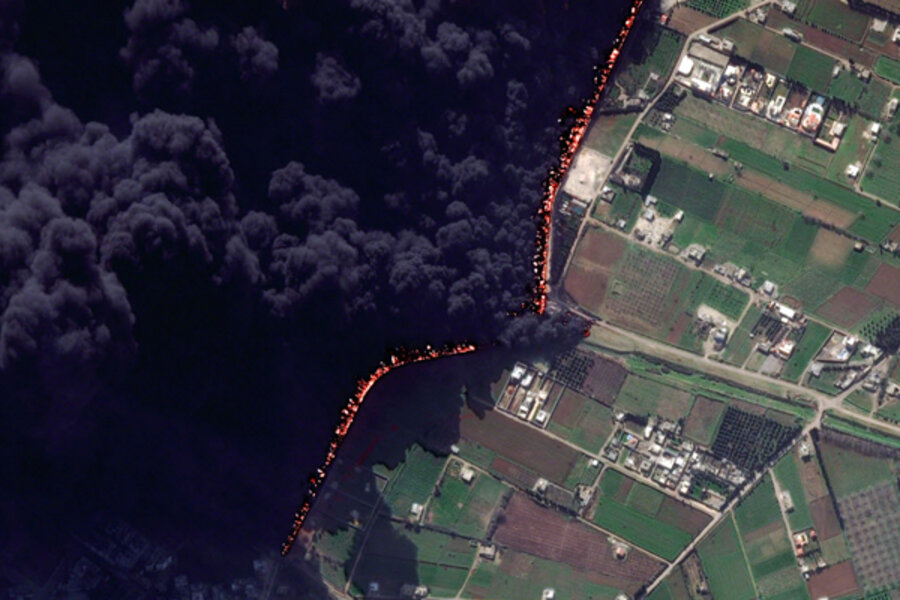More on death from the skies in Syria
Loading...
I wrote a few days ago about Bashar al-Assad's use of 240mm mortar rounds on the city of Homs, particularly the Baba Amr neighborhood, where dozens have died in the past week of withering shelling, among them two foreign reporters.
Monitor librarian Leigh Montgomery and the folks at SIPRI (they have forgotten more about the world's arsenals than you will ever know) helped me track down a little more information about what the Syrian regime is using on Homs, and possibly other cities.
I'd thought the firing platform for these beast-sized mortars -- with 75 pounds of explosives and a range of up to 12 miles -- was the Russian-made Tulip, basically a tank designed to deal death from a distance. But while it's possible that Tulips have been delivered by Russia to Syria in the past year, there's no evidence of that, and past SIPRI research shows no signs they've ever been delivered to the country. (Russia is Syria's major arms supplier, and the value of its shipments increased by 58 percent last year.)
But what SIPRI confirms is in Syria's arsenal is the Russian M240 for firing these mortars. While not as sophisticated as the Tulip, the M240 – towed into position by a heavy truck – still delivers accurate fire. It has been frequently used by Syria, from the 1973 war with Israel to the punitive expedition Assad's father, Hafez, launched on his own city of Hama in 1982, which left more than 10,000 residents dead.
In Iraq, I've been close to incoming mortar fire (far smaller) and it's terrifying. Raining mortars down on a densely populated area is beyond criminal.
Below is a video of US troops in Afghanistan firing smaller mortars in the Korengal Valley. Imagine if that ridge was filled with apartment blocks and the shells were at least twice the size, and you have a good picture of what's been happening in Homs.







